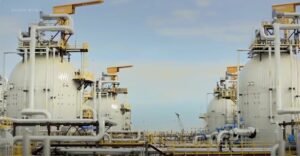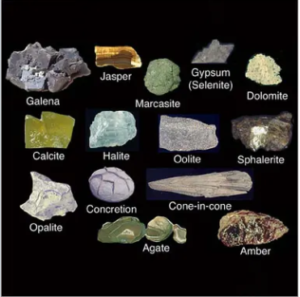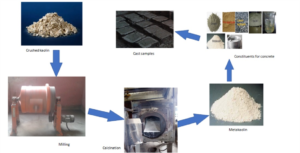The spodumene sector is navigating an intriguing period, with potential for price rises and strategic shifts that may position Australia as a major beneficiary. As lithium demand increases globally, particularly due to the electric vehicle (EV) market’s rapid growth, spodumene—a hard-rock lithium source often refined to produce lithium hydroxide—is becoming more crucial.
Green Shoots and Market Sentiment
Recent trends on the RK Equity Lithium Scoreboard, which monitors lithium-related equities, hint at a recovery in lithium prices. With two months of consistent gains, the scoreboard suggests a potential near-term uptick in spodumene and lithium chemical prices, as lithium market fundamentals strengthen. With a forecast demand surge, major players in the industry speculate that prices might reach $30,000 to $40,000 per tonne by 2026, driven by outlier estimates of a 4.3 million-tonne lithium carbonate equivalent (LCE) demand by 2030. This optimism stems from a combination of soaring EV demand, tightening supply constraints, and strategic investments.
Australia’s Role as a Key Player
Australia is currently the world’s largest producer of spodumene concentrate, with extensive reserves in Western Australia. As the lithium industry expands and valuations of lithium assets remain relatively low, Australia is positioned to be a central supplier to the world’s lithium needs, especially as countries like the United States and those in Europe seek to build more resilient, local EV supply chains. Australia’s proximity to Asia and its established mining infrastructure add to its strategic advantages.
Investment Trends and M&A Activity
Cheap valuations of lithium companies could drive a new wave of mergers and acquisitions (M&A). With giants like Tesla and General Motors making significant investments, other corporations may follow suit, seeking to acquire or partner with Australian spodumene producers to secure stable lithium supply. Notably, Tesla’s recent reception of spodumene from Quebec indicates the importance of North American supply chains, but it also underscores a larger trend toward diversifying suppliers, a strategy Australia is poised to capitalize on.
Geopolitical and Environmental Factors
Australia’s political stability and transparent mining regulations make it an attractive location for investors. This is particularly relevant as lithium projects in other regions, such as Ioneer’s Rhyolite Ridge in Nevada, face environmental and indigenous land rights challenges. These hurdles often delay production, making Australian projects, which have a comparatively smoother permitting process, more appealing.
Challenges and Market Volatility
Despite the bullish outlook, the lithium sector remains volatile. Geopolitical tensions, regulatory hurdles, and the cyclical nature of commodity markets all affect investor confidence. Moreover, environmental concerns around lithium mining persist, including water usage and land impact. For Australia to solidify its position, the sector must address these issues with sustainable practices.
Conclusion
As the world gears up for the lithium boom, Australia stands at a critical juncture. Its extensive spodumene resources, established mining ecosystem, and proximity to key markets make it a natural leader in the lithium supply chain. With rising M&A activity and potential price surges, Australia has an opportunity to solidify its role in the global lithium landscape, provided it navigates environmental challenges and market volatility effectively.
Australia’s prominence in the global lithium market is underscored by several key companies poised to benefit from the increasing demand for lithium, particularly spodumene concentrate. However, the environmental implications of lithium mining present challenges that these companies must address to ensure sustainable growth.
Key Australian Lithium Producers:
Pilbara Minerals Ltd (ASX: PLS):
- Operations: Pilbara Minerals operates the Pilgangoora Lithium-Tantalum Project in Western Australia, one of the world’s largest hard-rock lithium operations.
- Recent Developments: Despite recent price declines, the company maintains a strong balance sheet and has announced a $1 billion debt facility to ensure financial flexibility.
Mineral Resources Ltd (ASX: MIN):
- Operations: Mineral Resources has transformed into the world’s second-largest producer of spodumene, with significant operations at the Wodgina and Mount Marion mines in Western Australia.
- Strategic Moves: The company is considering partnerships with major automotive manufacturers to develop lithium chemical conversion plants, aiming to integrate further into the lithium supply chain.
Liontown Resources Ltd (ASX: LTR):
- Operations: Liontown is developing the Kathleen Valley Lithium Project in Western Australia, with first production imminent.
- Market Position: The company is strategically positioned to supply the growing demand for lithium, particularly from the electric vehicle sector.
IGO Limited (ASX: IGO):
- Operations: Through a joint venture with Tianqi Lithium, IGO has commenced production at the Kwinana Lithium Hydroxide Plant, marking Australia’s entry into lithium hydroxide production.
- Strategic Focus: The company is focusing on downstream processing to add value beyond raw material extraction.
Environmental Considerations:
While the economic prospects are promising, lithium mining, particularly from hard-rock sources like spodumene, poses significant environmental challenges:
- Water Usage: Hard-rock lithium mining is energy-intensive and requires substantial water for processing, which can strain local water resources, especially in arid regions.
- Carbon Emissions: The extraction and processing of lithium from spodumene are associated with high carbon emissions. A 2021 study found that mining lithium from spodumene ore releases about 37 tons of CO₂ per ton of lithium produced.
- Biodiversity Impact: Mining activities can lead to habitat destruction and loss of biodiversity. For instance, mining has significantly contributed to global deforestation, with nearly 1.4 million hectares of forest cover lost between 2001 and 2020.
- Community Concerns: Indigenous communities and local populations often express concerns over environmental degradation and the impact on their livelihoods. In some cases, mining operations have led to social struggles and human rights issues, particularly affecting indigenous communities.
Sustainable Practices and Mitigation:
To address these environmental challenges, Australian lithium companies are increasingly adopting sustainable practices:
- Renewable Energy Integration: Companies are investing in renewable energy sources to power mining operations, reducing carbon footprints.
- Water Management: Implementing efficient water usage and recycling processes to minimize freshwater consumption.
- Land Rehabilitation: Commitment to restoring mined areas to their natural state post-extraction to preserve biodiversity.
- Community Engagement: Engaging with local and Indigenous communities to ensure that mining activities are conducted responsibly and that benefits are shared equitably.
In conclusion, while Australian lithium companies are well-positioned to capitalize on the growing demand for lithium, addressing the environmental and social impacts of mining is crucial. Sustainable practices not only mitigate negative effects but also enhance the industry’s long-term viability and social license to operate.



